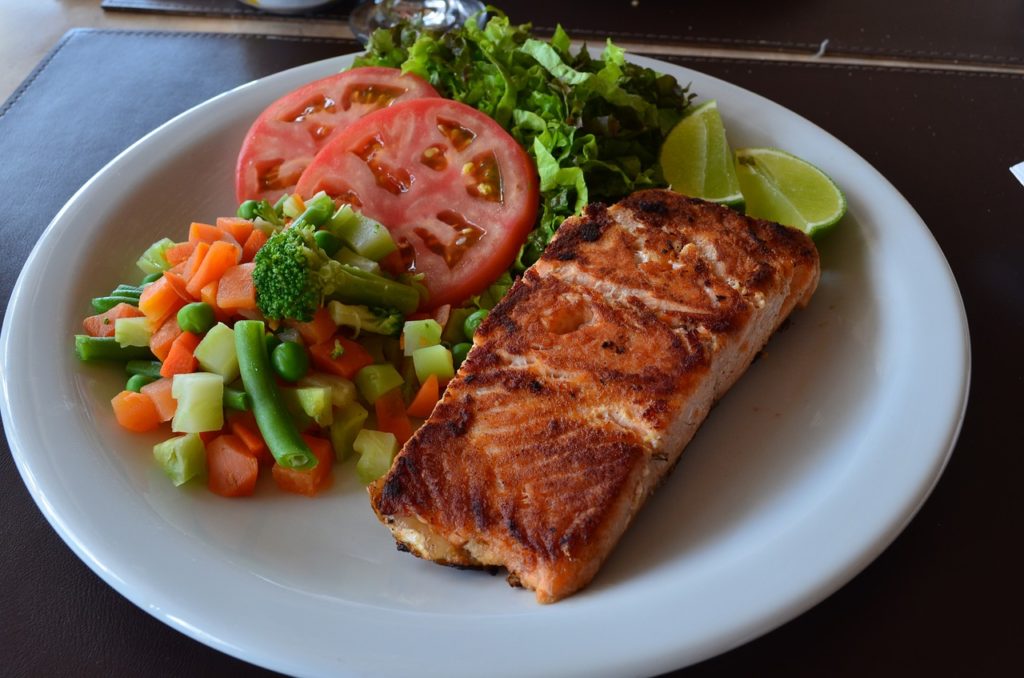Losing weight is one of the biggest challenges for people around the world. It seems like no matter how hard you try or how many New Year’s resolutions you make to lose weight, nothing seems to work. Try a weight loss fasting plan.
You have tried exercising to drop the pounds, but this only lasts until you begin craving your next fix for chocolate cake and ice cream. How do you begin to lose weight where you can really see a difference in the number of pounds being lost?
What kind of weight loss plan do you need that will work well for your unique needs? Discover fasting for weight loss and live a brand new quality of life without all of the pounds.

What is Fasting for Weight Loss?
Fasting for Weight Loss can be a simple and effective way to lose weight when properly done. People should do short-term fasts that will help them consume fewer calories and shed pounds. Studies show that fasting is more effective than traditional restrictive calorie diets.
Fasting for Weight Loss or intermittent fasting makes intuitive sense. The foods we eat are broken down in our gut by enzymes and end up as molecules in our bloodstream.
Carbohydrates in foods like flour and rice are a part of sugars and refined grains that are broken down into sugars which are converted into energy for your body.
Fasting for Weight Loss is a diet regimen that cycles between brief periods of fasting, with either no food or significant calorie reduction, and periods of unrestricted eating.
The Fasting for Weight Loss plan works with the body to diminish the cravings by giving you enough foods to stay full and filled with energy throughout your day.
When Did Fasting for Weight Loss Begin?
The Fasting for Weight Loss [; was popularized in 2012 by BBC broadcast journalist Michael Mosley’s television documentary “Eat Fast, Live Longer” and his book, “The Fast Diet.” The popularity continued with the book “The 5.2 Diet” by journalist Kate Harrison and Dr. Jason Fung’s 2016 bestseller “The Obesity Code. “
How and Why it Works?
When you fast, you consume fewer calories than you normally do or no calories at all. Common weight loss studies show that when you restrict your caloric content, the more weight you lose.
The Fasting for Weight Loss plan is a scheduled series of food intake that will drastically decrease the number of calories that you daily consume. You will essentially wake up early in the morning and drink a glass of lemon water.
You do not eat breakfast but eat later in the day lunch and snack. You will eat dinner around 8 pm and fast for 16 hours. The plan is for the entire week and calls for eating small portions of nuts, salads a peanut butter protein shake, and salmon, just to name a few.

5 Types of Fasting Methods
Lean Gains:
The Lean Gains plan requires 14 to 16 hours of fasting combined with 8 to 10 hours of feedings. Black coffee, sugar-free gum, sugar-free sweeteners, and diet sodas are allowed. Your feeding time will depend upon how often you exercise. Eating carbohydrates are more important than fats.
Eat protein-based foods during resting days. It is important to keep up with the planned feeding schedule to keep your body’s hormones in balance. Many people find it easier to fast at night during sleep than in the earlier parts of the day.
The Leangain protocol has found success in the mainstream because of the flexibility allowed in the plan. The Leangain has also been shown to increase your metabolism rate. And we all know that no matter how much your caloric intake, high metabolism rates give you the ability to shed pounds and lose weight.
Eat Stop Eat:
The EatStopEat weight loss plan requires fasting for 24 hours and then going back to normal eating. During the 24 hours, you can consume no food, however, you can drink diet-free sodas. Many people think of the plan as a push away from the table once or twice each week. The idea behind the plan is that you will limit your caloric intake without limiting the foods you can eat while dieting.
One of the key benefits of the EstStopEat plan is that it does not require you to starve yourself every day. You can eat whatever you want for 5 or 6 days each week. It is only during your fasting days where you have to fast for 24 hours. Depending upon your lifestyle, you can fast up to 2 times each week.
The Warrior Diet
The Warrior Diet requires that you fast for 20 hours during the day and eat at night. The idea is that the body’s rhythm works better when you eat during the nighttime. The plan is all about undereating. During your eating time, you can eat vegetables, raw fruit, fresh juice, and proteins, just to name a few.
The benefits of The Warrior Diet include: you have the ability to eat lightly throughout the day, it boosts your metabolism rate, it gives you the ability to overeat without feeling the guilt, you can see improvements in your overall health, including virility and vitality and you, increase lean muscle mass.
Fat Loss Forever
This is a combination of The Warrior Diet, EatStopEat, and the Leangain plans. It requires eating for one day as a cheat day. You will then fast for 36 hours. The rest of the 7-day cycle requires moving from one protocol of the other diets for a fasting plan. The Fat Loss Forever plan offers the most variety for the person who really wants to lose weight quickly.
The Fast Loss Forever protocol offers a 7-day schedule for fasting so that your body can get used to this structured timetable and reap the most benefits from the fasting periods.
Up Day Down Day or The Alternate-Day Diet:
The Alternate-Day Diet requires eating very little on one day and eating like normal the next day. This means eating around 2000 to 2500 calories for your normal eating day and 1/5 of that amount or about 400 to 500 calories on your limited days. Experts recommend that you drink protein shakes during your eating little day. You can sip on them throughout the day to feel full. This is probably going to be better than eating small meals that might leave you feeling hungry during the day..
Who Should Fast?
Weight Loss Fasting is not for everyone. It is not recommended for people who have or are prone to eating disorders. It could also be an issue for those people with underlying health problems. Ask your doctor to see if you will be able to try this Weight Loss Fasting plan.
How Much Weight Will I Lose While Fasting?
Fasting is one of the best ways towards a path of slow and steady weight loss. Experts have said fasting has been shown to reduce 90% of body fat, while traditional weight loss only reduces 75% of body fat.
What Is the Best Diet for Fast Weight Loss?
Experts recommend a diet that minimizes starches, added sugars, and animal fat from meat and dairy products. Focus on eating fruits, vegetables, egg whites, soy products, skinless poultry breasts, fish, shellfish, non=fat dairy foods, and 95% lean meats.
What Can the Weight Loss Fasting Plan Do for My Health?
The Weight Loss Fasting plan helps to improve body composition by demanding a caloric reduction, promoting weight loss, and decreasing body fat. In addition to weight loss, fasting can help control diabetes, lower cholesterol, and lower high blood pressure. All of these are critical ways to keep your body stay healthy and away from life-threatening diseases.

Other Benefits of Weight Loss
There are other benefits of weight loss that include: more energy, fewer headaches, less stress, and anxiety, saves money, balances mood disorders, better social life, better immune system, decreased memory loss, clearer skin, better sleep, improved self-esteem, and self-worth, food tastes better, higher mental clarity, improved sex drive, reduced need for prescription medications, decreased joint pain, hormone balance, less sweating, improved positive attitude about life, better mental health, stronger and healthier heart, lungs and other vital organs in the body, better eyesight, ability to get into smaller sized clothing, and better mobility.
These are some interesting facts about the Weight Loss Fasting plan that will help you decide how you will go about losing those unwanted pounds. Remember to do your research and monitor your well-being while fasting. There are 5 different types of fasting that you can try to see which one works best for you. Gone are the days where your weight loss plans do not work. These plans are about working with the circadian rhythm of your body to create a short-term plan to show a distinctive loss of weight that you can show off to your family and friends and be proud of.
Click Here to Get More Info On Our Recommended Intermittent Fasting Plan



